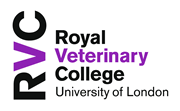RVC Supervisor(s): Dr Claire Thornton
Non RVC Supervisor: Dr Irilenia Nobeli (Birkbeck)
Department: Comparative Biomedical Sciences
Project Summary:
Mitochondria need to work efficiently in order to meet our cellular energy requirements especially in energy-demanding organs such as the brain. Mitochondrial dysfunction is a key hallmark of neonatal hypoxic-ischaemic encephalopathy (HIE), a brain injury that occurs in response to asphyxia during birth. HIE results in life-changing neurological consequences for 1-2 in every 1000 term babies in the UK, and significantly more in low resource countries; currently there are limited treatment options.
We previously identified the mitochondrial pro-fusion protein OPA1 as a target in a mouse model of neonatal hypoxic-ischaemic (HI) injury. Exposure to HI results in impaired ATP production, OPA1 cleavage and increased mitochondrial fragmentation. The aim of this PhD project will be to determine the impact of OPA1 degradation on protein interactions, cell survival and metabolic pathways in glial cells in order to devise strategies to protect OPA1 function and minimise brain injury.
To achieve this aim, you will generate RNA-seq/metabolomics datasets from glial cells and determine the molecular and metabolic pathways altered in response to OPA1 impairment, using a variety of in vitro, ex vivo and in silico techniques. In addition, you will develop and use computational modelling skills to identify small molecule ligands/drugs as candidates to maintain OPA1 function.
Safeguarding the integrity and function of OPA1 following hypoxia-ischaemia may represent a new mechanism to prevent the development of neonatal brain injury. Interventions based on maintaining OPA1 activity may provide additional neuroprotection for infants following birth asphyxia.
Requirements
Essential
- Must meet our standard PhD entry requirements
- Previous lab-based project / work experience (at least 6 months) using relevant techniques
- Enthusiasm, motivation and scientific curiosity
Desirable
- Background in mitochondrial biology and/or neuroscience
- Previous experience with primary cell culture
- Previous experience in bioinformatics and/or computational modelling
The successful student will be expected to carry out in vitro and ex vivo work
Funding
This is a 3 year fully-funded studentship, covering tution fees and stipend. This studentship is open to applicants eligible for "Home" fees. International applicants are welcome to apply but must be able to fund the difference between "Home" and "Overseas" tuition fees.
Please note that EU/EEA and Swiss national students may no longer be eligible to pay the “home” rate of tuition fees nor claim any financial support for their studies dependent on personal circumstances (including immigration status and residence history in the UK). To help determine whether you would be eligible for home fees please see the UKCISA's 'Who pays 'home' fees for higher education in England?' guide found here.
The studentship will commence 3rd October 2022.
How to Apply
For more information on the application process and English language requirements see please see How to Apply.
If you are interested in applying for this position, please follow the link below. Please use your personal statement to demonstrate any previous skills or experience you have in mitochondrial/glial cell biology and/or bioinformatics/computational modelling.
Interviews will take place March 2022.
We welcome informal enquiries - these should be directed to Claire Thornton [Email Address Removed]
Deadline: 6th February 2022

 Continue with Facebook
Continue with Facebook



